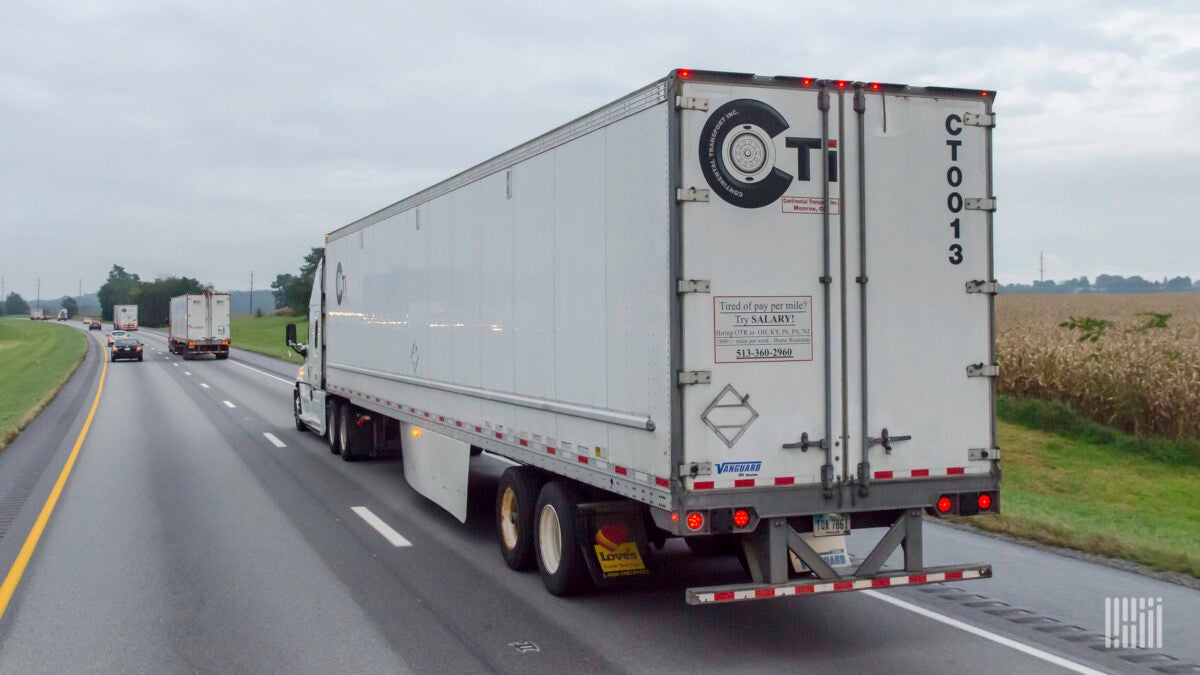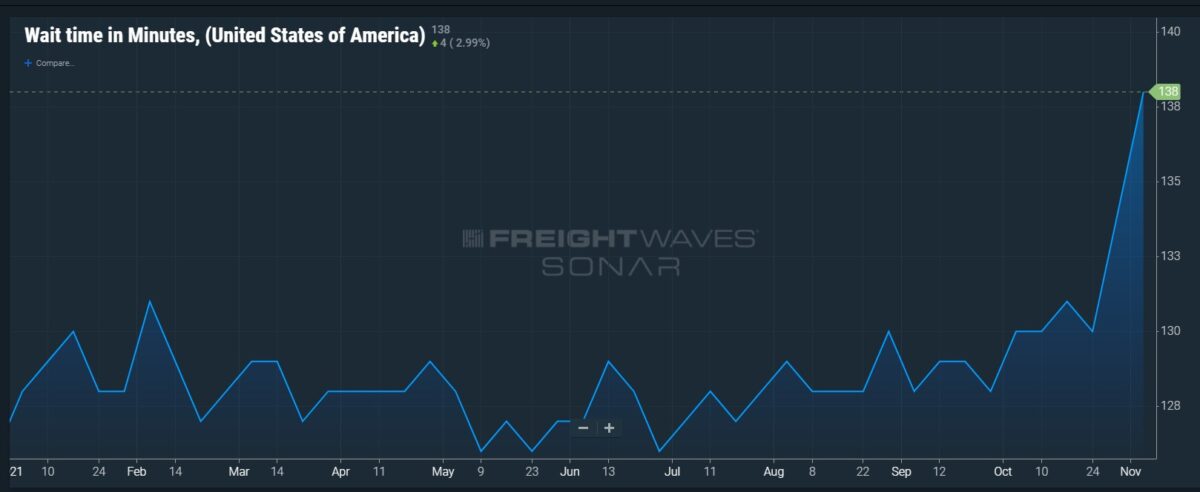
Private trucking fleets expand amid soaring spot rates
According to a recent National Private Truck Council Report, private fleets continue to expand due to high spot market rates and dwindling capacity in the market. Less capacity equals less service, and service metrics remain a big driver for in-house transportation. For large common carriers (they haul other people’s freight), this can pose a challenge since both private and common carriers target the same labor market. The NPTC Report highlights private fleet turnover averages of 14.25%, compensation over $75,000 per year, an average driver workweek at 42.4 hours and 71% of drivers home every night. Surprisingly, private carriers are facing greater competition from common carriers due to higher spot rates and freight demand. Michael Zimmerman, a partner with Kearney Consulting, said, “Common carriers are trying even harder to attract drivers from private fleets, and they are doing it with money.” Common carriers are resorting to lucrative sign-on bonuses, semi-regional or semi-dedicated route opportunities and even student loan reimbursement.
Private fleet trends:
- Walmart increased its inventory in spite of global supply chain problems, even using private cargo ships to avoid port delays.
- Pitney Bowes increased its private fleet count 42% year-over-year due to exposure to higher costs in the spot market and third-party transportation.
- Target increased its inventory and made supply chain adjustments internally, adding over 30,000 permanent positions across its supply chain network.
- Frito-Lay is recruiting warehouse and distribution center employees to get CDLs.
- Dollar General is expanding its private fleet due to rising trucking costs.
- Digital freight broker Convoy rolled out a private fleet power-only capacity feature to allow smaller carriers to utilize private fleet equipment and lanes.
Key takeaways:
When rates are higher, expect greater private fleet investment and dedicated contract pricing to hedge against higher rates. Service scores and customer service stability are major reasons private fleets expand in tight capacity environments. The LTL segment with the majority of drivers home each night is an attractive option compared to long-haul segments, but recent pay increases and recruiting drives have created greater competition for a limited driver pool. Common carriers with dedicated customers or semi-dedicated contract lanes may see disruption or integration depending on private fleet expansion, as some customers may target high volume lanes for private fleet savings. Backhaul lanes and utilization remain priorities for all fleets in this environment.
Mergers and acquisitions: When to build and when to buy, trucking edition

This year has seen a flurry of trucking and logistics mergers and acquisitions, due in part to record-low interest rates for lending, a growth in FreightTech innovations and a blistering hot freight market. Large fleets that reported record profits now sit on cash reserves and traditionally struggle to organically grow their fleets due to competition for drivers among other carriers. A solution to this dilemma involves buying a company that has both trucks and drivers and integrating them into your fleet. The fun part comes from the actual integration of operations and whether the investment will pay off, as the Harvard Business Review states between 70% and 90% of mergers and acquisitions fail. Below are a few major M&A events from 2021 to keep an eye on and see if they can beat the spread.
- Uber Freight completed its acquisition of Transplace, a $2.25 billion deal that required an additional investment of $550 million. The goal of this acquisition is to marry the digital brokerage of Uber with the Transplace TMS platform heavily used by many shippers.
- Knight-Swift entered the LTL market with a $1.35 billion acquisition of AAA Cooper. With the middle mile getting blended with e-commerce, an LTL acquisition is a great opportunity to expand the trucking network and have end-to-end control and savings at the last-mile segment.
- Canadian carrier TFI International Inc. acquired UPS freight for $800 million, expanding its LTL network with UPS Freight’s 197 facilities, 6,300 tractors and 23,000 trailers.
- The catch: UPS Freight was unprofitable, got rebranded as TForce Freight and went from a 99% operating ratio to 90% by Q2 2021.
- The cost: By October TFI closed four unprofitable ex-UPS Freight facilities and Q3 OR was at 90.7% amid post-acquisition attrition and sales force cuts.
- The possible rebranded future? TFI changes U.S. truckload, dedicated divisions into CFI, which includes UPS Freight dedicated and Transport America.
- Werner acquired regional carrier ECM Transport Group in a $142 million deal. This deal represents an adjustment in long-term capital deployment to include acquisitions as a means of growth. The deal added 500 drivers to Werner’s fleet, which was previously at 7,800 units, and increased its presence in Ohio, the mid-Atlantic and Northeast with greater exposure on 200- to 300-mile length-of-haul freight opportunities.
Final thoughts:
Hiring and growing businesses are difficult, and in the current business environment it’s much easier to buy the scale than grow it. Expect additional deals to be made as technology allows greater opportunities to scale and traditional truckload companies venture into the LTL space to expand their presence in the booming e-commerce sector. Don’t take my word for it. Avery Vise, vice president of trucking for research firm FTR, said, “That’s going to be a trend. [The] time was when shippers used to move stuff via either truckload or LTL. But those labels don’t really matter any longer. So I think we’re going to see more of that.”
Market update: Hurry up and wait — detention wait time at record levels

National average wait times are at record highs at 138 minutes, a reflection of using geofencing and telematics to determine time spent idling and not driving at a shipper or receiver. Higher detention wait times will impact a carrier’s bottom line through operational inefficiency, missing pickup or delivery appointments, and reducing driver income due to fewer loaded miles driven. If you have SONAR, plug in WAIT.USA to get the national numbers.
Routing guide: Links from around the web
New truck drivers over the age of 50 could be a potential solution to driver shortage (FreightWaves)
Echo CEO on going private: ‘Let me run faster’ (FreightWaves)
Transportation execs say supply chain dislocation lasting through 2022 (FreightWaves)
Apple to offer self-repair service for iPhones (Axios)
That’ll be $9: Coffee prices are highest in almost a decade (Bloomburg Quint)







